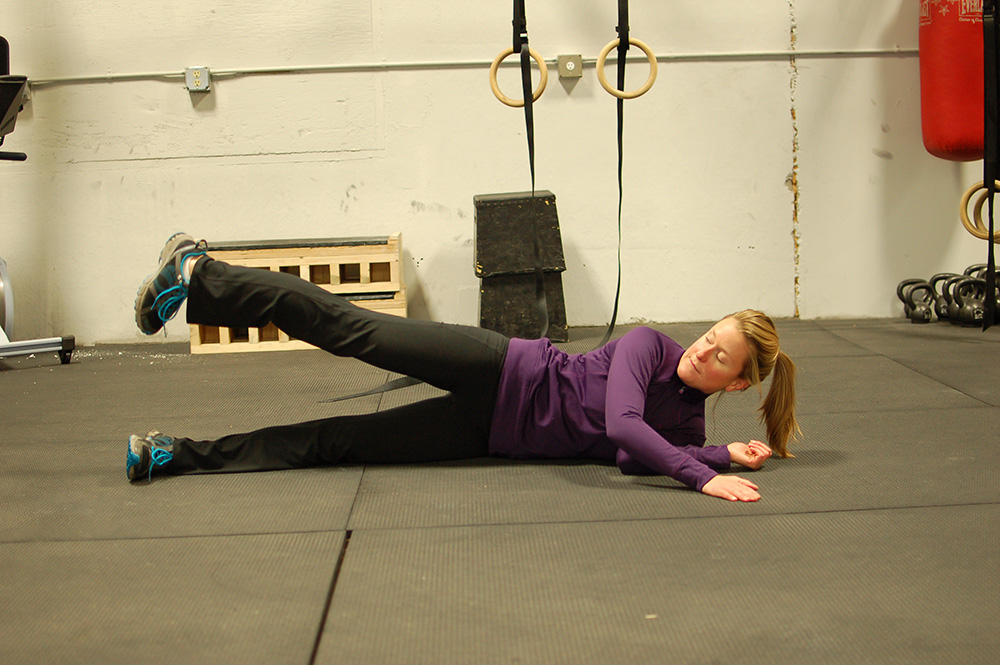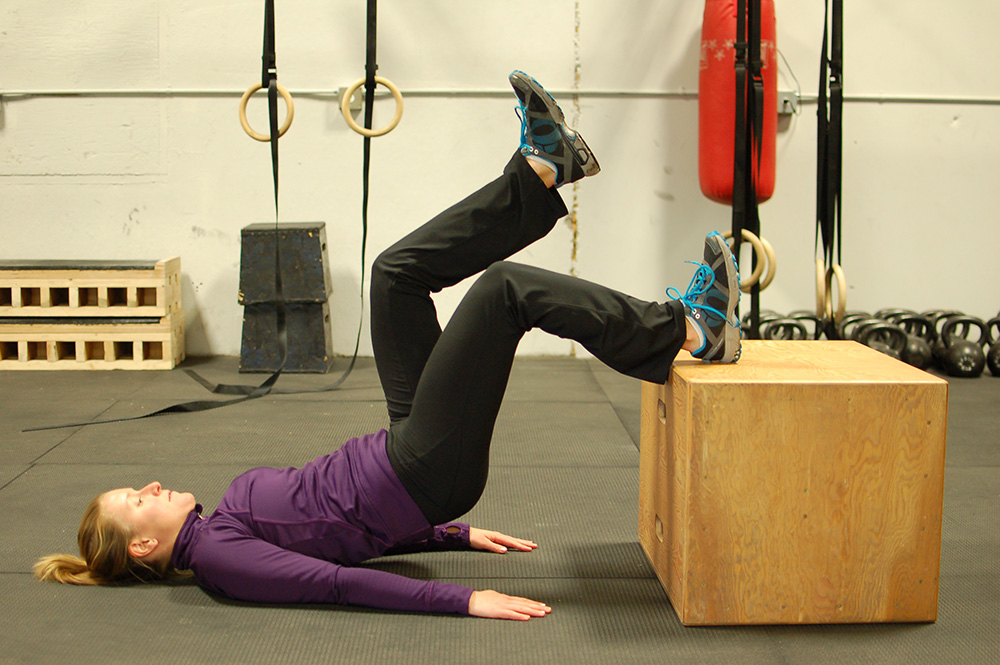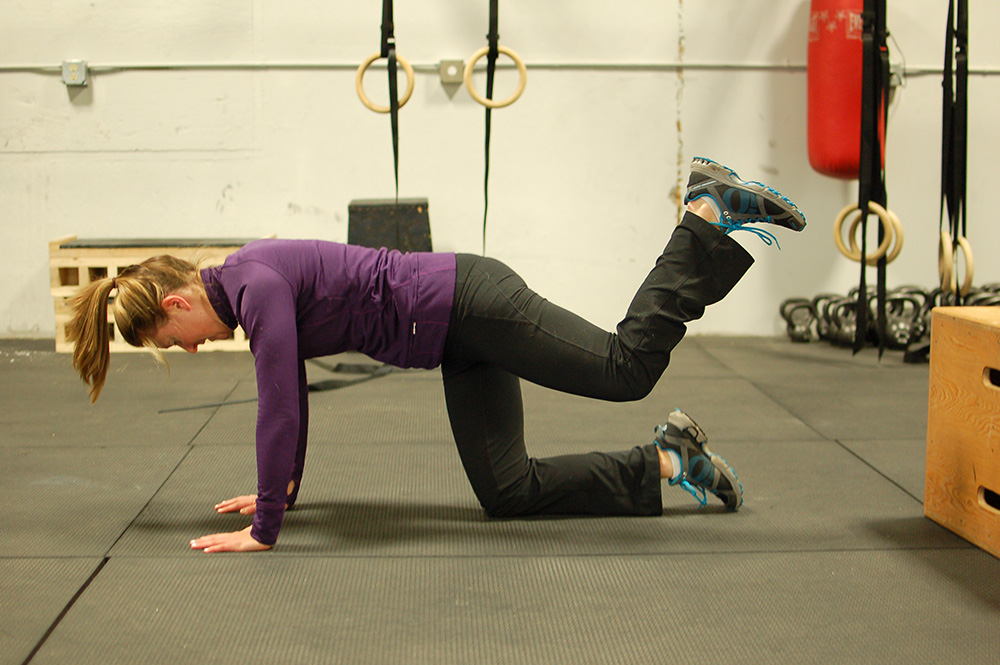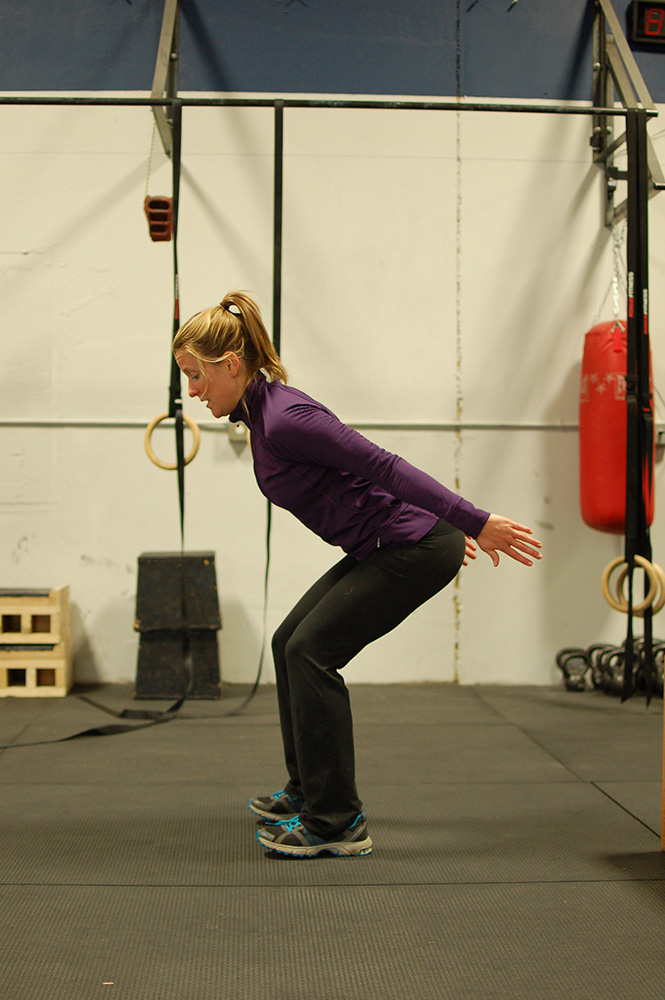Stay in the Game
Winter ski maintenance.
Whether you’re an expert skier dropping into steep chutes or just making mellow turns on groomers, staying injury-free this winter ought to be high on your priority list. You can do these four exercises at home, and they’ll help keep you strong and balanced to improve your durability on the mountain this ski season.
Glute Leg Lift
We know from research that the best way to reduce risk of injury to the knee (including ACL tears) is to strengthen your butt. When the gluteus muscles are weak, it creates an imbalance that leads to vulnerability in the knee joint—the last thing a skier needs. Do these 2-3 times per week, starting with 3 sets of 25 reps on each side. Increase the number of reps each week until you can do 60 reps unbroken with each leg.
Lie on your left side with your right forearm on the ground. This should tilt you slightly forward. With your right leg (top leg), point your toe straight down, tap it to the ground behind your other heel, and then lift it straight into the air. Perform 25 reps unbroken, and then switch sides.

Hamstring Hell
Since skiing is a quad-dominant sport, your hamstrings also play an integral role in protecting your knee. Skiing requires the knees and hips to withstand significant forces in many directions, so the surrounding musculature must be strong. Again, do these 2-3 times per week, beginning with 3 sets of 10 reps, and increasing each week up to 3 sets of 25 reps.
Lie on your back with a chair or box at your feet. Place your right heel on top of the box and position yourself so that your knee is bent at 90 degrees. Pushing through your heel, squeeze your butt and lift your hips until they reach full extension. Repeat 10 times, then immediately flip over onto all fours and with the same leg (kept at 90 degrees) perform 10 donkey kicks. After performing both exercises on one leg, switch sides.

Founder
Another area that is at risk is the lower back. As a society, we suffer from weak posterior chains, and these isometric exercises are designed to combat that weakness. This should help bring endurance to the lower back muscles that get fatigued from humping your pack around all day. Begin with 3 sets of 15-second holds in each position, and increase them each week up to 4 sets of 20 seconds.
Standing tall, unlock your knees until they are slightly bent. Keep your weight on your heels, your back arched, and hinge at the hips (push your butt back) until you feel your hamstrings tighten. There are three arm positions: arms down at your sides with palms facing in (15 seconds), arms outstretched with biceps covering your ears (15 seconds), and finally hands pushing against your shins. Move fluidly from one position to the next with no break in between.

Back Extensions
To help build that strong back, a few sets of back extensions are a great way finish off your training. Start with 3 sets of 10 reps, and increase each week until reaching 3 sets of 20 reps.
Lie face-down on the ground and pinch your knees together. From there, place your palms down next to your head so your arms are at 90 degrees. Without pushing through your hands, lift your chest up off the ground as high as you can, hold it for 2 seconds, then slowly lower yourself down back to the ground all while keeping your toes down and knees touching.

Remember, the mountain doesn’t care what skis you ride or how much your jacket costs—it will wreck you regardless if you don’t give your body the respect it deserves. So take the time this season to care for those susceptible areas. A good balance of strength and endurance will have you enjoying every day possible this winter.
John Murie is a trainer and coach at Altitude Athletics in Bozeman (altitudeathletics.com).












